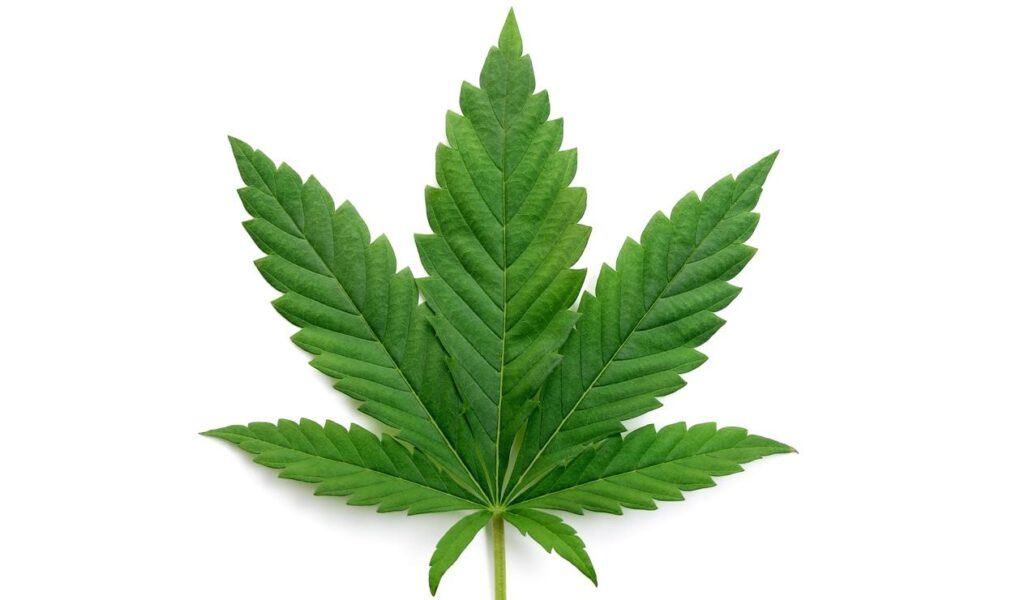In the lush tapestry of botanical nomenclature, few plants evoke as much curiosity and conversation as Cannabis. Known popularly for its psychoactive properties and cultural significance, this resilient herb harbors a scientific identity that often escapes the casual observer. Its dual existence as both a natural marvel and a controversial substance invites us to delve deeper into its classification and biology. What lies behind the name “Cannabis sativa,” and how does its taxonomy reflect a broader conversation about agriculture, medicine, and society? Join us as we explore the scientific name of marijuana, unveiling the intricate layers that define this fascinating plant and its role in both our ecosystems and our lives.
Table of Contents
- Understanding Cannabis: The Scientific Classification and Its Implications
- Exploring the Varieties: A Closer Look at Cannabis sativa, Cannabis indica, and Cannabis ruderalis
- The Role of Terpenes and Cannabinoids: Unlocking the Potential of Cannabis Species
- Best Practices for Cultivation: Recommendations for Selecting the Right Cannabis Strains
- Q&A
- Concluding Remarks
Understanding Cannabis: The Scientific Classification and Its Implications
Cannabis, scientifically known as Cannabis sativa, has long been a topic of interest within both scientific communities and popular culture. This genus, belonging to the Cannabaceae family, encompasses a variety of strains that are distinguished by their unique chemical compositions and physical characteristics. Understanding the classification is crucial, as it affects various aspects of use and cultivation. The primary species under this genus include:
- Cannabis sativa: Typically known for its uplifting effects, it is often favored for daytime use.
- Cannabis indica: Known for its relaxing properties, making it ideal for evening or nocturnal use.
- Cannabis ruderalis: Lesser-known for its auto-flowering nature, it is primarily used for breeding hybrid strains.
The implications of this classification are significant, especially concerning medicinal and recreational use. Each strain presents various cannabinoid profiles that produce different effects on the body, thereby influencing therapeutic applications. Cannabis sativa is often sought for its potential mental stimulation, while Cannabis indica is valued for its pain-relieving properties. This nuanced understanding opens doors to tailored therapies and enhanced user experiences. A simplified comparison of the primary cannabis species is illustrated below:
| Species | Effects | Ideal Use |
|---|---|---|
| Cannabis sativa | Uplifting, Energizing | Daytime |
| Cannabis indica | Relaxing, Sedative | Nighttime |
| Cannabis ruderalis | Minimal Psychoactive Effects | Breeding |
Exploring the Varieties: A Closer Look at Cannabis sativa, Cannabis indica, and Cannabis ruderalis
Cannabis sativa, known for its tall, slender stature, is a versatile plant often associated with a stimulating experience. Its striking leaves are typically narrow and can be light green, making it visually appealing. Users often appreciate sativa for its uplifting effects, which can enhance creativity and focus. This variety is rich in THC, which contributes to its psychoactive properties, and it’s frequently used during the day when activities are plentiful. Some notable characteristics of Cannabis sativa include:
- Growth Habit: Tall and spindly, often reaching over 12 feet in ideal conditions.
- Flowering Time: Longer than indica, typically 10-16 weeks.
- Common Uses: Mood enhancement, creative inspiration, and physical activity support.
On the opposite end of the spectrum lies Cannabis indica, a variety embraced for its calming and soothing effects. Shorter and bushier than sativa, indica plants feature broader leaves and are known for producing dense, resinous buds rich in cannabinoids. Users often turn to indica strains in the evening for relaxation or to alleviate physical discomfort. This variety has distinctive features, such as:
- Growth Habit: Compact and bushy, usually around 3-6 feet tall.
- Flowering Time: Shorter than sativa, typically 6-8 weeks.
- Common Uses: Pain relief, anxiety reduction, and sleep aid.
| Type | Height | Flowering Time | Effects |
|---|---|---|---|
| Cannabis sativa | Tall (over 12 ft) | 10-16 weeks | Uplifting, creative |
| Cannabis indica | Short (3-6 ft) | 6-8 weeks | Relaxing, calming |
Lastly, Cannabis ruderalis, often overlooked, plays a unique role in the cannabis ecosystem. This variety is primarily noteworthy for its auto-flowering capabilities, enabling it to transition from vegetative to flowering stages based on age rather than light cycles. While ruderalis generally has lower THC levels compared to its sativa and indica counterparts, it is appreciated for its resilience and adaptability to various climates. Distinctive traits include:
- Growth Habit: Smaller and wild, often growing in harsh conditions.
- Auto-flowering: Transitions from vegetative to flowering based on age.
- Common Uses: Breeding to create hybrid strains with desirable traits.
The Role of Terpenes and Cannabinoids: Unlocking the Potential of Cannabis Species
The intricate world of cannabis is as mesmerizing as it is complex, thanks to the remarkable roles played by terpenes and cannabinoids. Each strain of cannabis boasts a unique profile of these compounds, which not only contributes to the plant’s distinct aroma and flavor but also influences its effects on users. Terpenes, the aromatic compounds found in many plants, including cannabis, are responsible for the diverse scents and tastes of various strains. Some well-known terpenes include:
- Myrcene: Earthy and musky, often linked to sedation.
- Limonene: Citrus-scented, associated with mood enhancement.
- Pinene: Pine-fragrant, may help with alertness.
On the other hand, cannabinoids, such as THC (tetrahydrocannabinol) and CBD (cannabidiol), are primarily responsible for the psychoactive and therapeutic effects of cannabis. THC is well-known for its psychoactive properties, giving users the characteristic “high,” while CBD has garnered attention for its potential therapeutic benefits without the intoxicating effects. The entourage effect highlights the significance of these compounds working in tandem; the presence of various cannabinoids and terpenes can enhance or modify the effects of each other. A basic comparison of the two cannabinoids can illustrate their distinct roles:
| Cannabinoid | Psychoactive | Potential Benefits |
|---|---|---|
| THC | Yes | Pain relief, appetite stimulation |
| CBD | No | Anxiety reduction, anti-inflammatory |
Best Practices for Cultivation: Recommendations for Selecting the Right Cannabis Strains
Selecting the right cannabis strains for cultivation is a critical component that can significantly influence the success of your growing endeavors. To ensure a fruitful harvest, evaluate strains based on growth patterns, yield potential, and desired effects. Consider the following points when making your selection:
- Climate Compatibility: Choose strains that thrive in your local environment. Heat-tolerant varieties are advantageous in warmer regions, while cooler climates may benefit from more resilient strains.
- Indica vs. Sativa: Understand the differences; Indicas are generally shorter and bushier, while Sativas can grow tall and slender. Select based on your space and preference.
- Flowering Time: Check the flowering period of the strains. Shorter flowering times allow for multiple harvests in one season.
Additionally, it’s helpful to consult strain databases that provide insights into the genetic backgrounds and effects of various cannabis types. This can aid in making informed choices that align with your cultivation goals. Below is a simple comparison of popular cannabis strains:
| Strain | Type | Flowering Time (Weeks) | Effect |
|---|---|---|---|
| Blue Dream | Sativa-Dominant Hybrid | 9 | Relaxing, Euphoric |
| Granddaddy Purple | Indica | 8 | Sleepy, Happy |
| Sour Diesel | Sativa | 10 | Energizing, Uplifting |
Q&A
Q&A: Understanding the Scientific Name of Marijuana
Q1: What is the scientific name of marijuana?
A1: The scientific name for marijuana is Cannabis sativa. However, it’s important to note that marijuana is a complex plant with various subspecies and cultivars, the most recognized being Cannabis indica and Cannabis ruderalis. Each of these has its own unique characteristics and uses.
Q2: Why is it important to refer to marijuana by its scientific name?
A2: Using scientific names helps to avoid confusion that can arise from common names, which can vary by region and culture. The scientific classification provides a universal language that assists researchers, medical professionals, and cultivators in accurately discussing the plant’s properties and effects.
Q3: Are there different varieties within the Cannabis genus?
A3: Yes, the Cannabis genus is home to multiple species and hybrids. While Cannabis sativa is well-known for its uplifting effects, Cannabis indica typically offers more relaxing and sedative qualities. Cannabis ruderalis is less commonly discussed and is often noted for its autoflowering capabilities. This diversity allows for a vast range of products and experiences.
Q4: How do scientists differentiate between these species?
A4: Scientists utilize a combination of genetic analysis and morphological characteristics to differentiate between Cannabis species. Factors such as leaf shape, plant size, and cannabinoid profiles provide essential clues. Advances in biotechnology, like DNA sequencing, have further clarified distinctions within the Cannabis genus.
Q5: Is there an ongoing debate about the classification of marijuana?
A5: Absolutely. The classification of Cannabis is a dynamic field of study, with ongoing debates regarding the taxonomy and nomenclature. Some researchers argue that what we commonly reference as Cannabis indica and Cannabis sativa might not represent distinct species but rather different phenotypes within a single species. This discussion emphasizes the complexity of the plant and the need for continued research.
Q6: How does understanding the scientific name benefit consumers?
A6: For consumers, understanding the scientific name and its classifications can lead to informed choices regarding usage. Knowledge of the differences between Cannabis sativa and Cannabis indica, for example, can guide users toward selecting the right strain for their desired effects, whether for medicinal or recreational purposes.
Q7: What role does the scientific name play in legal contexts?
A7: The scientific name of marijuana is crucial in legal contexts, particularly when defining regulations surrounding its use and cultivation. Various laws refer to Cannabis in distinguishing between hemp (a low-THC variety) and marijuana (generally higher in THC), impacting everything from agricultural policies to healthcare regulations.
Q8: Can the scientific name of marijuana evolve over time?
A8: Yes, as our understanding of cannabis biology deepens and genetic studies advance, the scientific nomenclature might evolve. The classification may adjust based on emerging evidence that reveals more about the genetic relationships between different cannabis plants. This underscores the dynamic nature of scientific inquiry and taxonomy.
Q9: Why should one care about the scientific name at all?
A9: Beyond academic interest, caring about the scientific name of marijuana fosters a broader understanding of its complexities and potential benefits. It bridges the gap between casual use and serious research, enriching conversations about this multifaceted plant and its role in society, health, and the environment.
Concluding Remarks
understanding the scientific name of marijuana—Cannabis sativa, Cannabis indica, and Cannabis ruderalis—offers more than just a glimpse into the complexities of this versatile plant. It underscores the importance of taxonomy in the realms of botany, medicine, and legal regulation. As research continues to evolve, so too does our understanding of cannabis and its myriad effects and benefits. By acknowledging the scientific underpinnings of marijuana, we pave the way for informed discussions, responsible use, and enlightened policies. As we navigate the shifting landscapes of perceptions and laws, it remains clear that the language of science provides the foundation for a deeper appreciation of cannabis in all its forms.


